As climate change and disease make crops less predictable, scientists are making contingency plans: cultivating new varietals, battling bugs and pioneering new growing techniques
It’s 10am in Badajoz and the sun is already beating down on the tomato fields in this pocket of south western Spain. Undeterred by the heat, Manuel Vázquez deftly climbs through the furrows in search of a perfect ketchup tomato.
This is a typical day for Vázquez, who is CEO of Europe’s leading tomato processor, Conesa. After picking one exemplary fruit, he cuts into it with a pocketknife and explains how the thickness, colour and juiciness combine to make an exceptional ingredient for a table sauce. After all, this isn’t any old tomato; it’s been grown specifically to make Heinz Tomato Ketchup. Heinz, Conesa’s largest customer, has been cultivating its own tomato seeds for its Ketchup, Baked Beanz and Cream of Tomato Soup since 1934 – and the work continues to this day.
It’s an incredible operation. Vázquez explains that each distinct Heinz tomato seed has its own code number. Tomatoes grown from the seed numbered 2,401 are used for ketchup, as they produce a thicker paste, more suited to the table sauce. Meanwhile, tomatoes grown from seed 1,015 create a thinner paste, which works better for tomato soup and baked beans.
The seeds were originally cultivated to “evolve our products in line with culinary tastes and trends”, Kraft Heinz VP of global agriculture & sustainability Patrick Sheridan explains. However, the long-established practice has evolved, now reaching the point where it is helping the fmcg giant battle climate change.
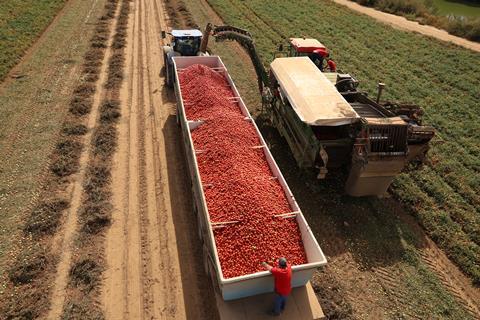
“These seeds are created to adapt to different climates across the world to manage heat stress, water stress and disease pressure,” says Sheridan. “Climate change continues to be a challenge, but it’s also an opportunity to innovate the next generation of tomato seeds that can tolerate [these conditions] better than ever before.”
Heinz seems optimistic about the future of its portfolio. But climate change affects thousands of manufacturers and their retail customers. So what is food and drink doing to mitigate the impact on key commodities? Are they moving fast enough to protect today’s food staples for future generations? And what will we eat if extreme weather compromises some of our favourite foods?
Eggs in one basket
One of the biggest issues facing today’s food industry is its lack of diversity, says Caspar Chater, senior research leader in crops and global change at the Royal Botanic Gardens, Kew.
“Over the past 200 years, we as humans have been investing heavily in agriculture and crop breeding but focusing almost all our efforts on a very small number of crops. They tend to be cereal crops – maize, wheat, rice – and that’s because they’re very calorific,” he says.
Relying on a handful of high-yielding, calorie-rich crops has had its benefits. In the case of the Green Revolution of the 1960s, high-yielding varieties of rice, particularly a strain known as IR8, and wheat were rolled out across India to increase food production and alleviate hunger and poverty for millions – becoming known as the ‘miracle rice’ in the process. However, it also brought problems, causing the extinction of indigenous crops and leaving our modern food system vulnerable to disease.
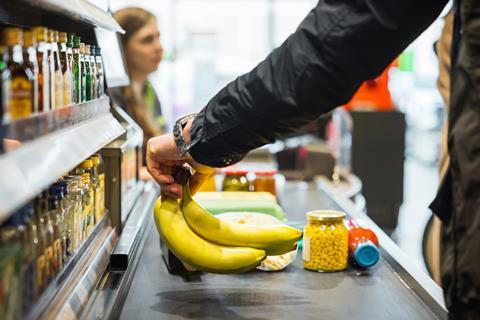
“The problem is we’ve been growing these as large-scale, high-input monocultures,” says Chater. “Growing the same crop over a vast distance is very efficient, but at the same time it requires this big investment of mechanisation, machinery, artificial fertilisers and a lot of pesticides. We’re putting a lot of one very tasty thing in a very large area, so it’s highly vulnerable to plague.
“In some places, you’ve got outbreaks of plant diseases, like rusts that affect wheat, which means that our system, without these inputs, is highly vulnerable, and now, what with highly accelerated climate change brought about by our failure to curb carbon dioxide emissions, we’re facing a very uncertain day to day, which is really difficult for farmers to plan for.
“They can’t plan for drought and they can’t plan for floods – and those things bring their own suite of diseases that compound the stresses and the crop failures. Diversification is one way of mitigating that risk, so you’re not putting all your eggs in one basket.”
“Farmers can’t plan for drought and they can’t plan for floods – and both bring their own suites of diseases that compound the stresses”
Caspar Chater, Royal Botanic Gardens, Kew
Resisting disease in bananas, soybeans and olives
History shows what can happen when you rely on one crop. Take bananas, for example. The Gros Michel variety was the most widely exported banana before it was wiped out in the 1950s by a fungal infection called Panama disease. Cavendish bananas – which were immune to the fungus – have since become the supermarket staple: we eat five billion of them per year in the UK alone.
However, Panama disease has since developed a new strain that can kill Cavendish bananas off, which means a new species of banana will likely have to be cultivated in the future. Kew scientists are already collecting and protecting wild relatives of the banana in anticipation of the Cavendish banana becoming extinct.
Soybean, which is used heavily for animal feed, is also at risk. Argentina, a country “highly dependent on soybean as a cash crop”, saw its fields stunted by disease last year, says Chater. “They’ve had to basically tell all their farmers: ‘You cannot plant this season. You must forgo your crop of soybean, because we need to get on top of this plant disease.’”
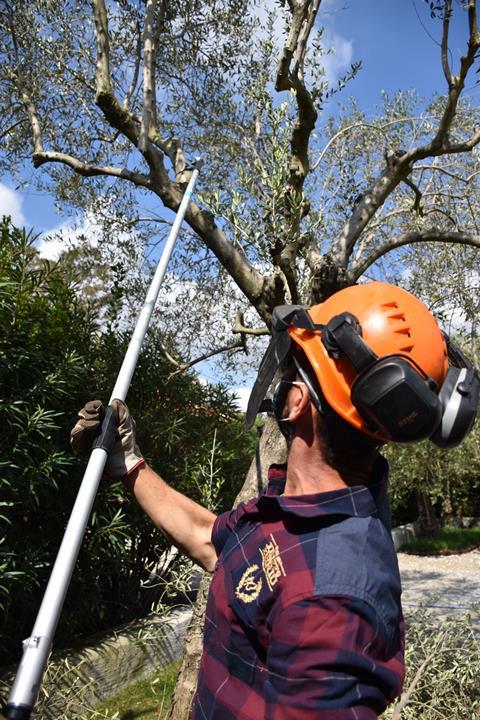
While disease is “nothing new” in farming, “the scale of it is so much greater – and the frequency of it”, says Chater. “Because of this change in temperature and humidity going northward, that brings with it all those diseases from the south. So, if things travel with the weather, we’ll be confronted with new problems all the time.”
Disease poses such an imminent risk to certain crops that some food manufacturers are taking matters into their own hands. After xylella fastidiosa – a deadly bacteria detected in Italy in 2013, which is carried from tree to tree by spittlebugs – began to destroy the nation’s olive groves, Filippo Berio owner Salov teamed up with the Italian national research council (CNR) to find a solution.
The CNR was able to identify an Italian olive variety that is naturally immune to the disease – Leccino – which they began mixing with Spanish and Greek varieties. Salov has since planted what it calls its ‘biodiversity orchard’, which features a collection of ancient Tuscan varieties, some of which are resistant to xylella and some of which are resistant to extreme climates.
A partnership between Salov and the University of Cordoba has also seen the planting of varieties that can resist both xylella and verticillium, a fungal disease, in Spain. While initial findings have been promising, the orchards are “not a research project that we’ll get quick results from”, says Filippo Berio UK marketing manager Lisa Mullins, explaining the trees “take seven years to reach fruition”.
Read more:
-
Five startups transforming the future of food
-
How functional food is targeting brain health and wellness
-
Why people earning £80k a year are still shoplifting
As these projects have been running, olive oil production has been massively hampered by extreme weather conditions across the Mediterranean, where 90% of global olive oil is made.
“We had two years of hugely high temperatures and drought,” says Filippo Berio MD Walter Zanre. This has meant “olive oil has reached the highest prices ever… and there’s been a real pinch point in availability”.
After two years of drought, Spain has had “quite a normal year” this past season. Zanre is confident the return to normality will help “rebase the market”. However, its recent challenges point to an uncertain future for olive oil production.
“Logic would dictate that product would be grown in more favourable regions,” says Zanre. “But the big obstacle in the olive oil world is the time required to have something become commercial. You’re planting an olive grove and looking at a return in five to seven years, so that involves a lot of land and a lot of investment, and unfortunately, the people with the money are not happy to look at such long-term returns.”
The decline in rice production
Rice is also facing an uncertain future. About half of the global population eats it, and yet extreme weather is causing yields to decline. Ancient varietals that were more resistant to drought and salt water have dwindled or even gone extinct following the mass rollout of IR8 rice in the 1960s.
What’s more, traditional rice farming has a major environmental impact, not least in terms of water, requiring 3,000-5,000 litres of water per kilogram of rice, as the crop is usually grown in permanently flooded fields. This method produces large amounts of methane as a byproduct of the anaerobic process that takes place when rice plants grow under water.
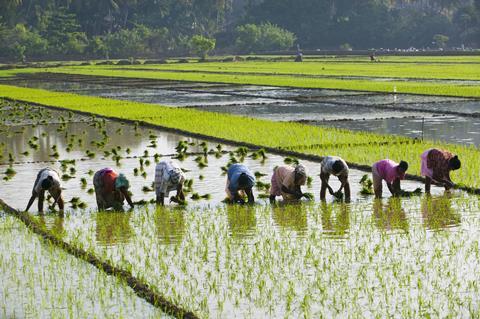
To reduce its impact on the climate, Tilda worked with 1,270 farmers in northern India in 2023, teaching them the alternate wet and dry (AWD) irrigation technique. AWD irrigation, developed by the International Rice Research Institute (which also developed IR8), allows fields to largely dry out between floods, reducing the volume of water needed and methane released.
“Climate change is a challenge, but it’s also an opportunity to innovate the next generation of tomato seeds”
Patrick Sheridan, Kraft Heinz
After learning the AWD technique, farmers taking part in Tilda’s programme were able to reduce the amount of electricity used for pumping irrigation water by 27% per tonne of rice grown compared with non-participants. They also increased annual yields by 7%.
“Tilda’s sustainability programme is focused on promoting rice-growing techniques that require fewer resources,” says Tilda head of sustainability and external affairs Jon Calland. “Less water, less fertiliser, less energy and crop protection methods that respect biodiversity… we know from the results of farms adopting the AWD method that we can grow rice in a way that is much less resource intensive.”
Calland admits rice is “in the process of catching up” with other crops on sustainable practices. “Researchers have mapped out which rice varieties respond best to these new growing conditions, and we’re in the process of trying to understand these interactions in field trials so we can optimise those inputs.”
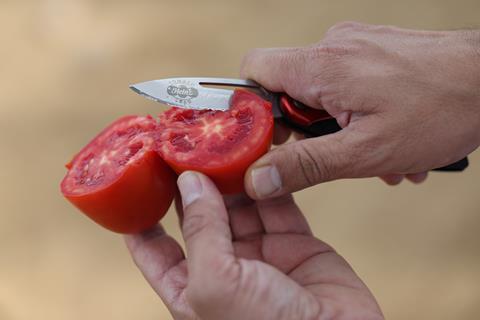
Precision breeding (whereby the DNA of a plant or animal is tweaked for desirable traits) “will be essential for us to achieve more sustainable food production”, says Calland. His conversations with crop scientists have convinced him that necessary research is being delayed by regulatory hurdles.
The UK government is trying to amend this. In October, Labour confirmed it would bring forward the secondary legislation required to unlock the benefits of the Genetic Technology (Precision Breeding) Act, first introduced by the Conservative government in 2023, as soon as parliamentary time allows.
The legislative change could help scientists breed climate-resistant varieties of crops in crisis, like cocoa. Today, the global market is heavily dependent on Theobroma cacao, which has returned a poor crop over the past couple of years due to adverse weather.
However, scientists last year identified three alternative cocoa species – Theobroma globosum, T. nervosum and T. schultesii – in the South American rainforests. Dr James Richardson from University College Cork, who led the research team, believes the breakthrough has expanded the genetic resources available to develop drought or disease-resistant trees. Even so, growing, cross-breeding and testing these varietals will take several years.
Cocoa-free chocolate
In the meantime, a handful of startups have presented their own revolutionary takes on chocolate by removing the cocoa altogether. London-based food tech company Win-Win, for instance, uses precision fermentation to convert vegetable fat, carob, oats and barley into a chocolate alternative.
Win-Win’s mission is to “create delicious products with low-carbon, abundant ingredients”, says the startup’s chief strategy officer Ahrum Pak. And chocolate was an obvious starting point because it’s got “a lot of problems”.
For one, about 70% of the world’s cocoa is produced in Ivory Coast and Ghana. “As soon as so much production is concentrated in one area, you’re really at risk of supply chain shocks, and that’s exactly what we saw last year,” says Pak. “We saw the price [of cocoa] spike around six times.”
By eradicating the problematic commodity altogether, Win-Win has produced a price-stable chocolate alternative that boasts “price parity” with traditional bars.
“The unfortunate thing for chocolate is that as well as being a victim of climate change, it’s also a perpetrator,” Pak says, explaining that 21 litres of water is required to make one small bar of milk chocolate, in addition to cocoa and dairy. “It’s such a delicious food, but it’s creating a lot of harm.”
Over the past three years, Win-Win has been refining its process and working with in-house chocolatiers to ensure the way its product “melts and coats the mouth is super similar to conventional chocolate”, says Pak. “Even the way you work with it, the way you temper it, the gloss that it has – we’ve looked at all of that.”
Cocoa: a commodity in crisis
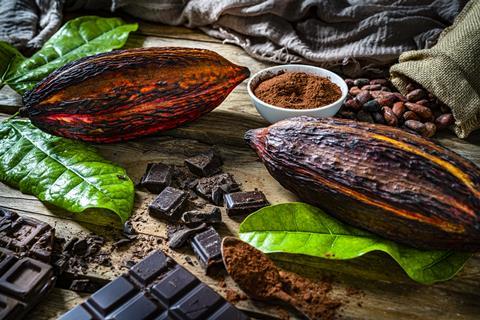
The cost of confectionery, biscuits and other items has rocketed as a result of record-breaking cocoa commodity prices last year.
In New York’s Intercontinental Exchange (ICE), a steep incline was seen from the start of 2024, surging more than 40% to $5,874 in February and hitting $10,760 per tonne in April before falling back for several months and then reaching an all-time high of $12,931 per tonne in December.
The rally was triggered by a poor crop in west Africa, caused by extremely dry weather, compounded by the spread of diseases such as cacao swollen shoot virus (CSSV) in cocoa plantations across both Ivory Coast and neighbouring Ghana. According to the World Bank, global cocoa production declined by an estimated 14% in the 2023/24 season, to 4.2Mt.
Leading chocolate manufacturers have since passed on price increases – or reduced pack sizes – to mitigate the impact. The shelf price of a Cadbury Dairy Milk sharing bar (95g & 110g), for instance, has increased by an average 17.8% to £1.72 across the traditional big four supermarkets, Waitrose and Aldi [Assosia 52 w/e 30 January 2025].
Despite passing on price increases, Cadbury owner Mondelez has warned that its earnings will likely fall this year due to “unprecedented cocoa cost inflation”.
So, what are the prospects for the cocoa sector?
“While prospects for the 2024/25 marketing year are looking better, there are still concerns over weather developments in west Africa and what it could mean for output this season,” wrote Warren Patterson, head of commodities strategy at ING, in December. “Forecasts currently show that west African output – which accounts for more than 70% of global output – will edge higher. However, there are risks to this due to recent poor weather.”
So, while cocoa’s future remains uncertain, shoppers look likely to continue paying more for their favourite chocolate treats.
As a result of its recipe, a “lot more large companies have reached out to us” over the past 12 months, says Pak. Big manufacturers are also expressing an interest in ChoViva, the cocoa-free chocolate brand of Munich-based food tech startup Planet A Foods.
Like Win-Win, Planet A Foods adopts fermentation methods to make ChoViva, using oats and sunflower seeds as its base ingredients. In January 2024, ChoViva partnered with Swiss chocolate giant Lindt to launch a limited run of vegan chocolate bars under sub-brand Hello. Available exclusively in Germany (via Lindt’s webstore), the bars contained ChoViva’s cocoa-free “oat creme filling with hazelnut and oat cookie pieces”, covered in Lindt’s vegan chocolate.
ChoViva is now gearing up to launch its first product into UK retail, an Easter egg made in partnership with German chocolate manufacturer Wawi.
“The unfortunate thing for chocolate is, as well as being a victim of climate change, it’s also a perpetrator”
Ahrum Pak, Win-Win
Like Pak at Win-Win, Planet A Foods chief technology officer Sara Marquart cannot stress how important taste is when developing a convincing chocolate alternative.
“We found in our market studies that taste is the most important aspect for shoppers; it must taste amazing,”. she says. “Next to taste is price. It’s an indulgent thing. You want to sit on the sofa at night and have a sweet treat and feel good.”
Startups like Planet A Foods aren’t hoping to completely replace the foods their products are inspired by, though. Take Singapore startup Prefer, which has created its own bean-free ‘coffee’. It claims its product, made by fermenting, roasting and grinding waste bread, soy and barley, is 40% cheaper than Arabica coffee. Its ingredient is sold B2B to manufacturers, who can use as much or as little of it as they want in their products.
“What we’re doing is integrating as an ingredient within their existing product line,” says Prefer CEO Jake Berber. “They might launch a 50% Prefer, 50% arabica coffee, so they can still get their unique flavours that their customers love, but they get the added benefit of cost and carbon reduction.”
According to Pak, desperate times are going to require drastic measures. “We’ve got a really massive problem on our hands,” she says. “How do we address it? We simply have to look at new ingredients.”



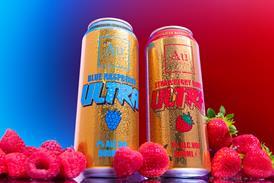
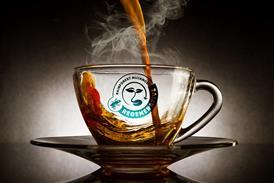







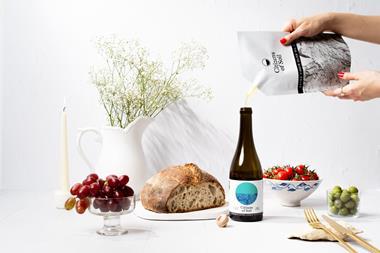



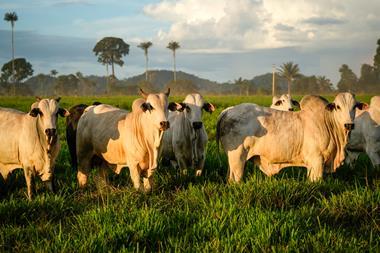
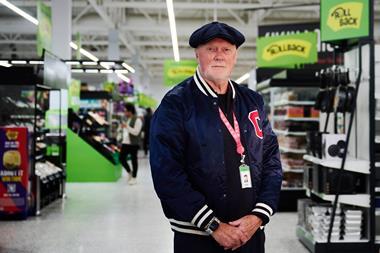
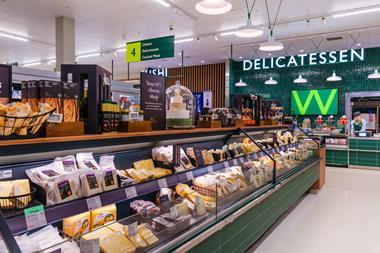


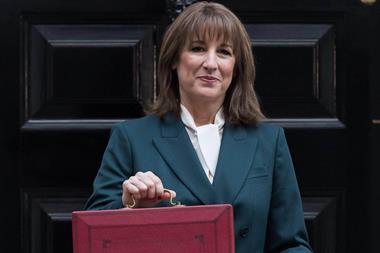
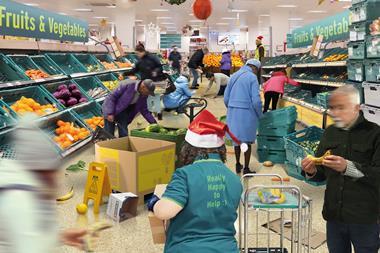
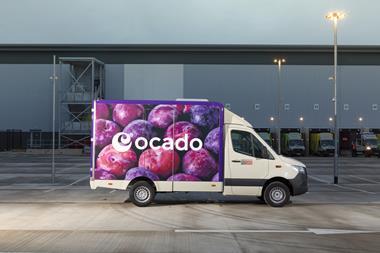
No comments yet